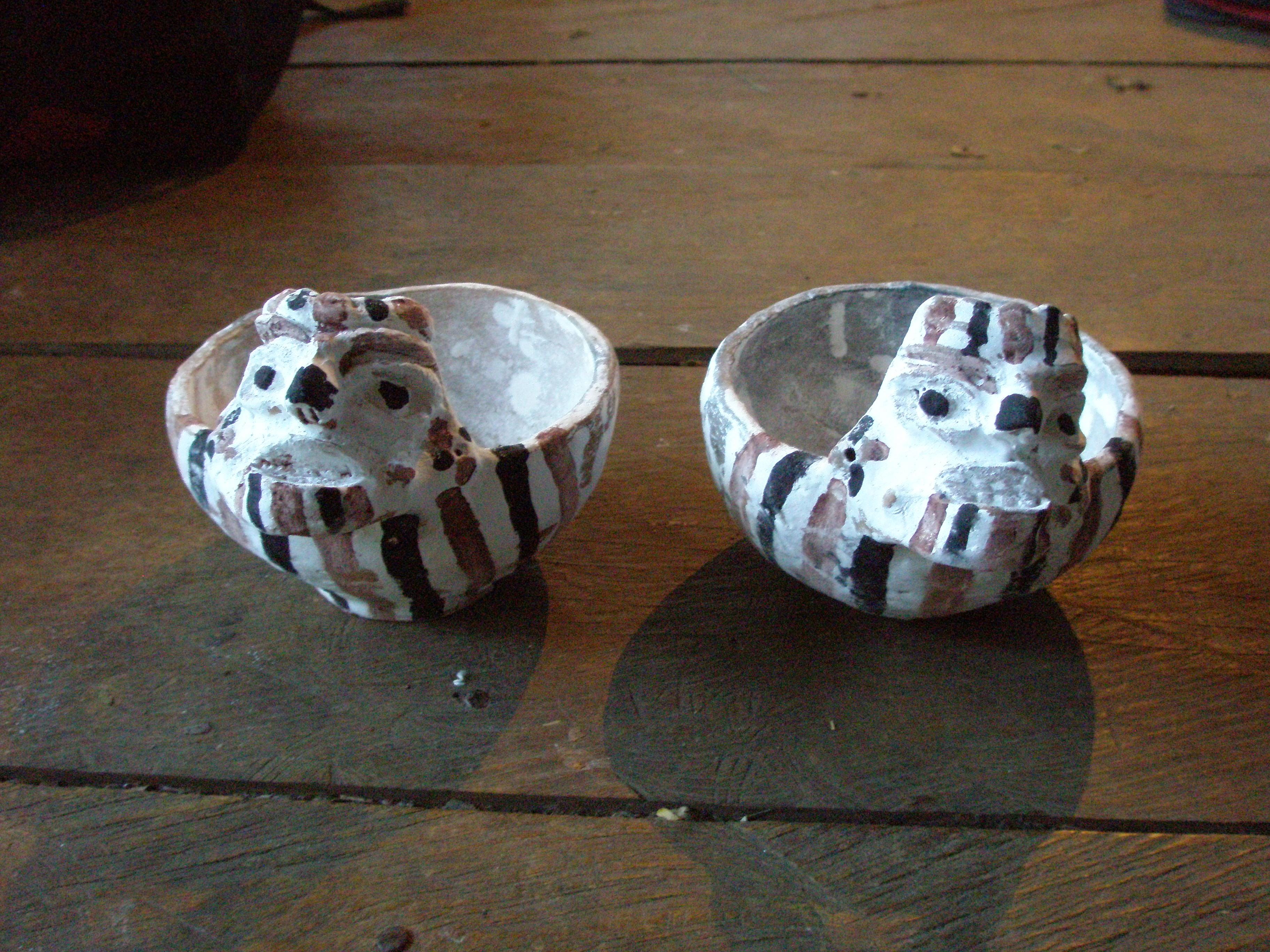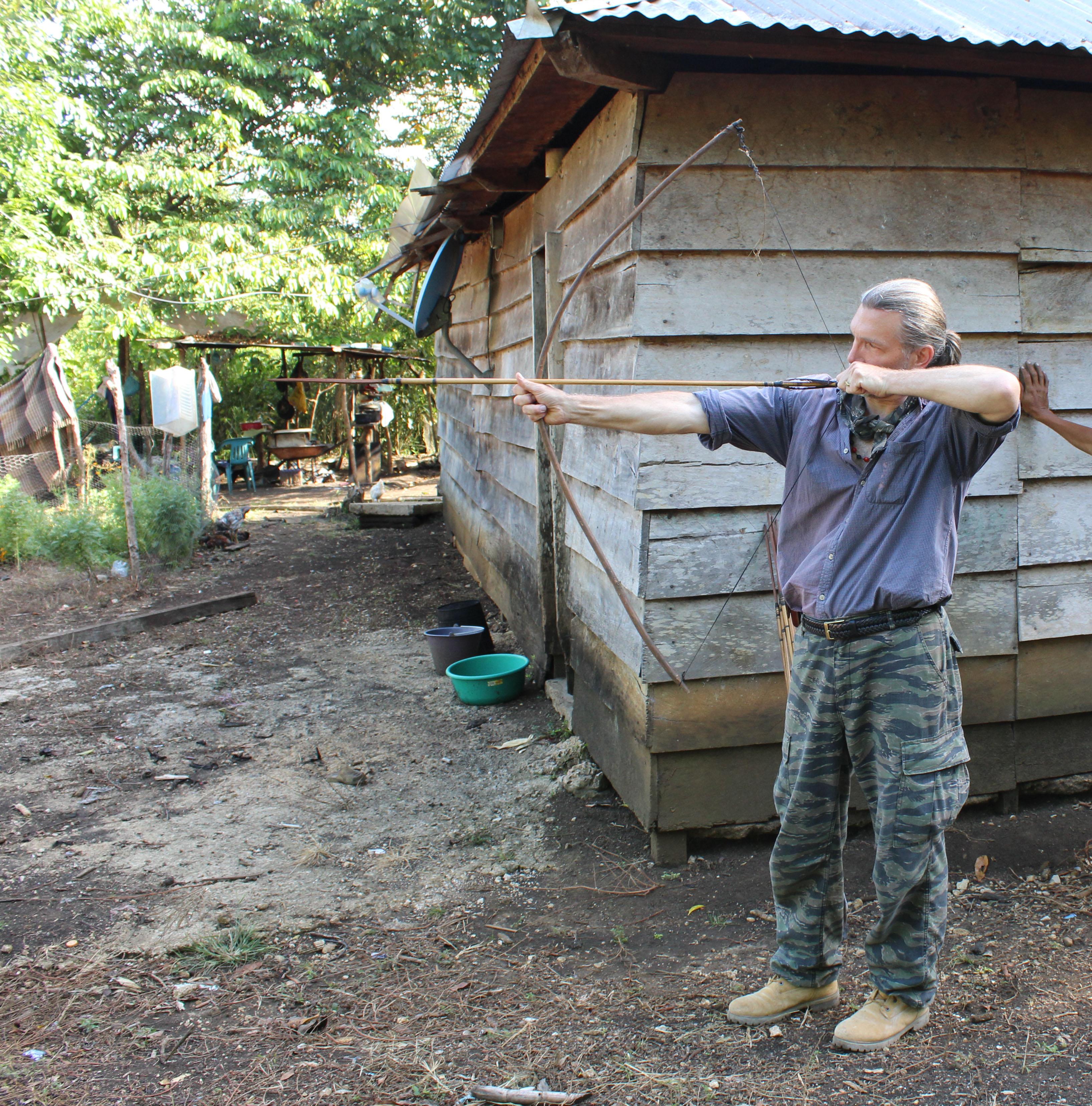“A lot of students think we’re just going to talk about art and aesthetics, but I challenge them to think about the cultural importance of art. How was it made, why was it made, how was it used?”
This is the mindset Joel Palka — a recently hired associate professor at the School of Human Evolution and Social Change — wants students to bring with them when they walk into his new course, Anthropology and Art (ASB 350).
Throughout the semester, students will explore the art forms of peoples from around the world, focusing not on how the art looks, but rather on the context behind it. Examples include cedar wood masks from indigenous groups of the Northwest U.S. and their connections to identity; poured-bronze sculptures in India and their treatment as living entities; and the shields of the Asmat people of New Guinea, which are seen as having a supernatural power to protect in battle.
Even art from the Western world has its own context, says Palka. And although we may not think our society associates spiritual forces with objects the way others do, there are examples that prove that’s not entirely true.
“I tell my students about studies where a person offers two sweaters to university students — saying one is off the rack from the store, and the other from a convicted killer. Nobody would wear the killer’s sweater,” he said.

Contemporary Lacandon Mayan incense burners from Naja, Chiapas, Mexico. After used in cave shrines, they were abandoned there. Photo courtesy of Joel Palka
Palka himself specializes in Mayan art, another topic covered in the course. He’s interested in Mayan culture change from the time of the Spanish conquest in the early 16th century to the present, so his research involves both archaeological and anthropological work in the rainforests of Chiapas, Mexico.
He also finds it extremely valuable to include the descendant community from where he works in his research.
“When we excavate architecture and artifacts, they provide cultural interpretation of what we find,” he said.
The necessity of diverse perspectives to capture the full meaning of something is a principle he now instills in his students as well. Each week, ASB 350 students read about art from another culture and then write about and discuss their take on major themes, how the art is important to its society, and what they do and don’t agree with in the reading.
“It’s neat because everybody sees something different,” Palka said. “Anytime we talk, we’re going to have anywhere from five to 15 main topics of discussion.”
He also assigns students a research project based on the art of Teotihuacan, which was on display at the Phoenix Art Museum during the first month of the semester. He believes it’s important to get up close and personal with the art whenever possible.

Palka practices with a native Lacandon Maya bow and arrow outside a friend's house at Mensabak, Chiapas, Mexico.
“Don’t think you can be a good art student just by reading books,” he said. “If you don’t see the real thing, you’re missing out on a lot.”
“When I was an archaeology student, my professors taught about the ‘Dancing Figures’ sculpted panels that depict sacrificial victims from Monte Albán in Oaxaca, Mexico. I always thought they were like this big,” he said, gesturing with his hands an arm-length apart. “But when you go to the actual site, you see that they’re double life-size.”
Palka’s favorite lecture to teach is inspired by the work of a fellow ASU faculty member and anthropologist, Associate Professor Miguel Astor-Aguilera of the School of Historical, Philosophical and Religious Studies.
Astor-Aguilera turns conventional thinking on its head, says Palka, by arguing that the Maya did not hold their art as sacred and disposed of it once it had served its function.
“It was not supposed to be put in a museum,” Palka said. “It was supposed to rot.”
By the end of the course, his goal is to have transformed the way students think about and appreciate the human component behind these masterful pieces, enriching what could otherwise be just a visual experience.
“I hope that, when they go to a museum, they look at art in a different way,” he said. “Not just as something beautiful from one artist, but as part of a larger story of human culture.”
Top photo courtesy of Pixabay.com
More Arts, humanities and education

ASU alumna makes her way back to the ASU Gammage stage for '¡azúcar!'
As the Los Angeles-based CONTRA-TIEMPO dance group prepares for its upcoming production “¡azúcar!” at ASU Gammage, for one member of the dance group it is also a nostalgic return to her home.Born in…

ASU FIDM professor wins international award for fantastical, sustainable creation
The horror of an ailing Earth inspired an Arizona State University fashion professor to create a fantastical garment out of sustainable, re-used and found materials that won a prestigious…

ASU workshop trains educators, professionals from marginalized communities in disaster science
As devastating as hurricanes can be to anyone caught in their paths, they strike marginalized communities even harder.To address this issue, a fund named for a former Arizona State University…
